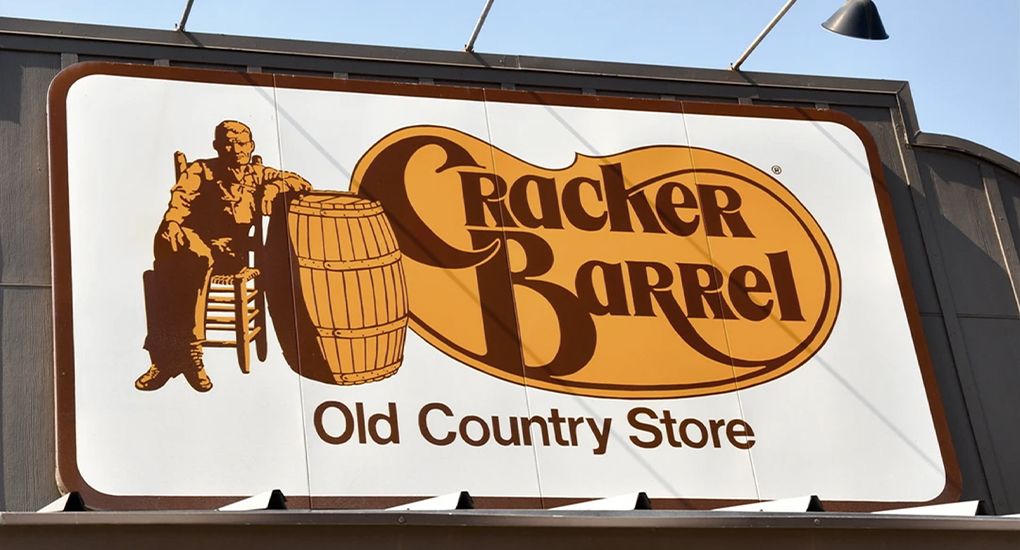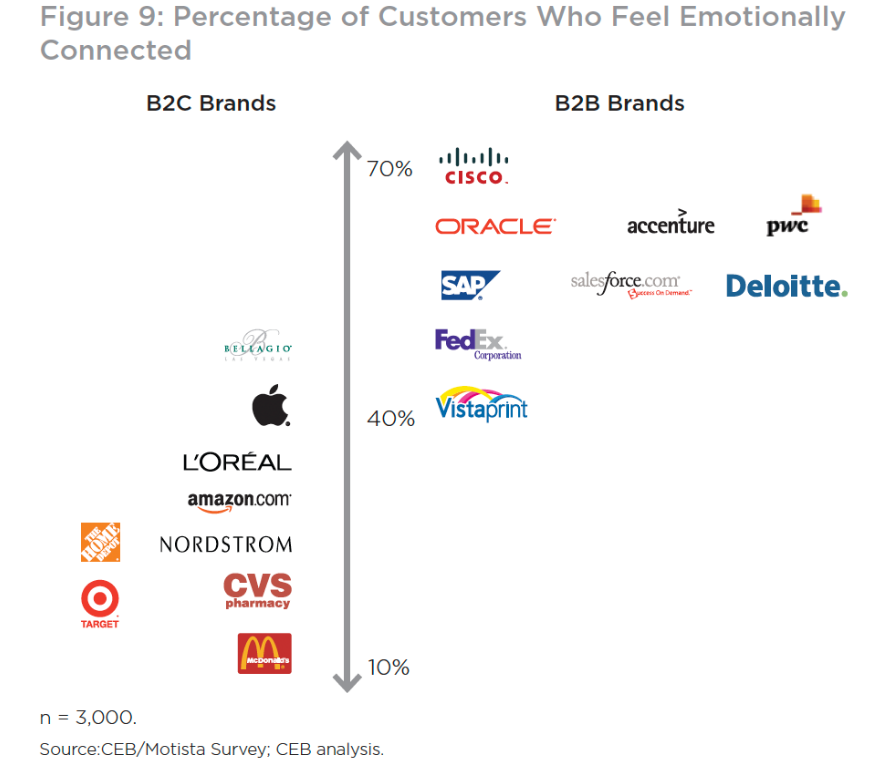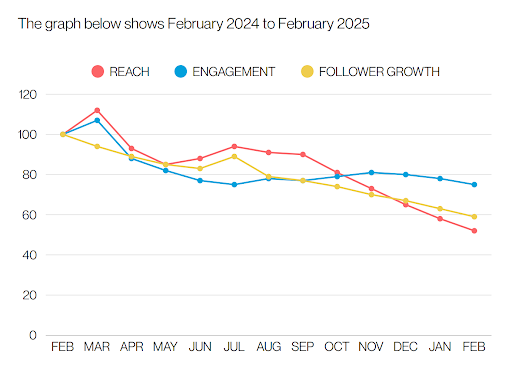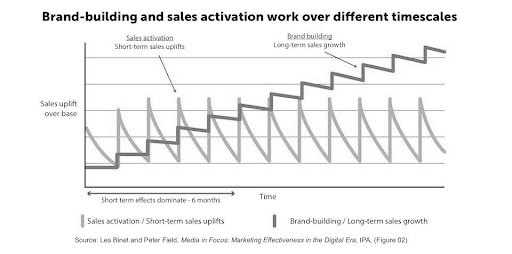
by Christina | Dec 3, 2025 | 2025, Blog
Now that the dust has settled, the branding agency fired and the old brand restored, it’s a good time to look at what really happened with the rebranding of Cracker Barrel – something the mainstream media largely overlooked.
Let’s start with the firing of the agency behind the rebrand. Prophet – founded by Scott Galloway and Ian Chaplen with David Aaker as vice chairman – is a powerhouse branding firm known for rigorous research and disciplined strategy. This isn’t a group of amateurs crowdsourcing a logo.
Prophet does its homework, has A-list clients and has successfully delivered hundreds of rebranding and branding projects. What went wrong?
How bot activity fueled the rebrand backlash
The most interesting part of this story never made headlines – likely overshadowed by the president’s comments that turned the rebrand into a politicized moment.
What was largely missing from the uproar was the real source of the rapid outrage: bots. According to the Wall Street Journal, bots posing as real users drove a disproportionate share of the social chatter that media outlets picked up. PeakMetrics – which works with the U.S. Air Force to identify foreign misinformation – found that the backlash originated from high-follower human accounts but was quickly amplified by bots.
By August 20, the day after the launch, X saw about 400 Cracker Barrel posts every minute. Molly Dwyer, director of insights at PeakMetrics, said 70% of accounts posting used duplicate messages, with some repeating the same text dozens of times – a clear sign of bot activity. Nearly 45% of Cracker Barrel posts on X during that 24-hour surge were estimated to be bot-generated. PeakMetrics also reported that almost half of all posts calling for a boycott came from bots.
Why the spike? Foreign entities often try to stoke political tension by tapping into what Dwyer describes as a ready-made audience primed for negative engagement. In Cracker Barrel’s case, its rebrand landed squarely in the politicized crosshairs of social media – and bots did the rest.
What this means for B2B marketers
Consumer brands have greater visibility and appeal to a broader set of buyers than most B2B brands, so it’s easy to assume the business environment carries less risk.
But that isn’t necessarily true. Years ago, Google and CEB (now part of Gartner) researched the role of emotion in B2B purchasing decisions. One of the key findings was that buyers feel a stronger emotional connection to B2B brands than to consumer brands.

For many people, that’s surprising – but the reason is simple. It comes down to personal risk. If you buy the wrong L’Oréal lip gloss, it may be annoying, but you won’t lose your job over it. Choose the wrong enterprise software and you could damage your reputation, waste company money or even jeopardize your role. The stakes are higher, which drives a stronger emotional connection.
In our survey of over 400 B2B buyers across a dozen brands, we asked which brand attributes mattered most in their final purchasing decisions. Trustworthiness ranked number one, with reliability close behind.
What the Cracker Barrel backlash reveals about brand vulnerability
The Cracker Barrel episode is a stark reminder that even the most thoughtful, research-driven branding efforts can be derailed when they collide with today’s volatile digital ecosystem. The real story wasn’t a misstep by a seasoned agency or a logo that missed the mark – it was how bot-driven outrage can hijack a narrative and turn a routine brand refresh into a cultural flashpoint overnight.
For B2B marketers, the lesson isn’t to fear rebranding but to respect the emotional stakes involved. Buyers are more invested, more risk-averse and more attuned to signals of trust and reliability than we often assume. And while B2B brands may not receive the same amount of public attention as consumer giants, they operate in a space where reputational missteps carry significant professional consequences.
As lines blur between genuine sentiment, manufactured outrage and political polarization, marketers must approach rebrands with both courage and caution. Rebranding will always involve risk – but in a world where algorithms and bad actors can amplify negativity at scale, clarity, authenticity and stakeholder alignment have never mattered more.

by Christina | Sep 4, 2025 | 2025, Blog, Marketing
What if you ignored your “high intent” signals – didn’t follow up, didn’t call, didn’t email – just to see if leads would self-identify and reach out to you?
It sounds counterintuitive, but if a lead is really interested (at least according to your scoring tools), they should eventually fill out a form or call you, right? That’s the experiment we’ve been running.
For the past six weeks, we’ve been quietly tracking web traffic and running a test we know many of our clients would love to try but can’t. No outbound, no follow-ups – just observation.
The Setup
Using Warmly, we set our parameters around ICPs, buyer personas, and first- and third-party intent signals. For this experiment, visitors had to meet two criteria:
● Spend at least 28 seconds on the site
● Visit at least 2 web pages
The Results
After filtering out competitors and consults, 15 visitors from the last 45 days fit the criteria:
➖ 10 Moderate confidence lead
➖ 3 High confidence lead
➖ 2 Very high confidence lead
(“Lead” comes from the platform, not us. )
Our “highest intent” visitor came back to the site 24 times over two weeks, spending a total of 26 minutes across pages like Team, Services, Solutions, and Blogs. That person sounds like a qualified lead, right? We’re still waiting on a form submission.
So… Why Haven’t They Converted?
We dug deeper and found a few possible reasons:
1. Bad Data – when we looked into the contact records, some were miscategorized – for example, individuals associated with a company but are no longer employed there.
2. Wrong Personality Fit – using our proprietary personality profiling tool, we found that some visitors’ motivations were likely exploring on behalf of someone else, or just passively learning.
3. The Nature of Our Business – we don’t sell widgets. We offer services – thoughtful, consultative, relationship-driven solutions. Our sales cycle is longer and leans heavily on word-of-mouth. It takes time, trust, and timing.
Now let’s play this out and say we did hit the button on pushing them into Hubspot as a lead, as many organizations do every day.
The “leads” would make their way over to sales and be assigned to SDRs for follow up. Here’s the dirty little secret that marketing and sales knows but they don’t talk about.
Marketing knows those leads aren’t qualified but has a “lead target” to hit so off they go. Sales also knows that marketing knows those leads are qualified, but they have SDRs that need to be fed. This is the game that is being played across sales and marketing organizations every day.
Marketing with an increasingly vast number of tools and ways to capture anyone who merely glances at a website or email are able to capture more contacts than ever before. Tool providers using the wrong term “lead” for what is maybe at best a “response” are complicit in this charade.
Sales, which in the past would ignore (and still do in some ways) these non-qualified responses are now stuck with sales capacity they need to make productive. They’re using reps to qualify “leads” that aren’t leads, in the hope of making them leads. Sounds ridiculous right, because it is.
Even though they know the chances of a conversion are low, I’ve never met a sales manager that will give up sales resources voluntarily. The mentality of “the more reps I have, the better shot I have of making quota” is pervasive.
All of this to hopefully expose the charade so that sales and marketing can have a candid conversation about how ineffective the game is and finally take steps towards realistic performance goals.
The winner in all of this? Potentially everyone – marketing, sales and most importantly prospects who are just trying to learn who you are. and what you do, or to simply just read some content that you have posted.
Just because you can track every visitor doesn’t mean you should hand them off. Let your prospects explore. Let them learn about your company, your services, and your value – at their own pace. Let them raise their hand when they’re ready.
It’ll save your team time, effort, and energy – and likely lead to better conversations when the moment’s right.

by Christina | Jul 29, 2025 | 2025, Blog
Late last year LinkedIn changed its algorithm, signaling a pivot in its business strategy and taking a dramatic shift. The question is, why?
Has LinkedIn come to the realization that other social platforms are increasingly coming after business (especially small business) or is it their advertising model they covet?
The truth is, LinkedIn needs growth. Revenue growth has slowed to 9% in 2023 and 2024, driven mostly by premium subscription and talent solutions.
And new growth looks like advertising, and lots of it. The old free “networking” platform is quickly transitioning to becoming an ad platform.
The Change
Many users of the platform will tell you they saw a dramatic decrease in their engagement metrics at the end of last year. According to Richard van der Blom and Just Connecting’s Algorithm Insights Report 2025, overall organic reach has declined 50% over the last year in hope of connecting content with the right audience…quality over quantity.

LinkedIn’s AI-driven ranking systems now resemble those of platforms like Instagram and TikTok, meaning you are more likely to see content coming from less creators, and more from creators you engage and/or connect with. Compared to the past which was more balanced towards professional relevance and interest.
Just as the other platforms mentioned have created content “rabbit holes” to dive into, those same content holes are being created in a quest to drive deeper engagement. Where it was once believed that LinkedIn favored organic content creators, it’s now fully on the side of the content consumers. For businesses, this change (unless you have a broad following) means that little of the content that you are sharing on your corporate page will make it through to your audiences organically. In fact, according to a report, organic corporate page content showing in a LI feed has now fallen to 2% in 2024.
The Big Push for Video
What is increasing is video. Lots of it. The use of video increased by 69% in the past year according to the Algorithm report and Daniel Shapero, LinkedIn’s COO who stated that viewer time has increased by 36% year-over-year.
To continue the push to video, LinkedIn has now built a staple of 50+ B2B influencers to promote it. They’ve signed business partnerships with well-known content creators, like Steven Bartlett (The Diary of a CEO), Guy Raz (How I Built This), and Allie K. Miller (AI Business), to make more video content for the platform. Anyone want to guess why?
If you guessed ‘to sell more advertising’, you’re correct. Mr. Shapero also stated that advertising revenues saw significant growth in the quarter, and they see video as a great way to extend business reach.
What Does it Mean for Business and Paid Social?
The first question…is LinkedIn an important media channel for your business? If so, then the second question is, what is the goal? What is your expectation – do you see it as an awareness or demand generation channel?
If it is the latter, you may find the new direction frustrating. LinkedIn pushes video mostly for reach and impressions. And, as I mentioned in my last post, LinkedIn posts and promotions are very difficult to connect to business impact metrics. You may be better off investing in LinkedIn’s Sales Navigator.
If the goal is awareness, then you are in luck! Here’s what you need to do in order to align with the new direction.
- Ramp up video – Identify thought leaders who are camera ready to use for short form videos. Candidates should be subject matter leaders and not salespeople.
- Videos should be vertical in format and under 1 min in run time.
- Shift budget from promoting posts on your LinkedIn corporate page to higher performing thought leadership ads sponsoring videos.
- Posting video should be done by the person featured and reshared by the corporate page…and hopefully, employees within your organization.
- Focus on storytelling. Personal stories perform best. Go easy on the selling.
- Link your metrics to track performance from impressions to form fill or website visit.
Will it Work?
LinkedIn says that the changes have been made in an effort to bring more of the content consumers want by mining engagement data. By doing this, it is restricting the organic reach of content creators. And that organic reach drove results, according to The Social Shepherd, 77% of B2B marketers said that organic content and engagement produced the best results.
Now those creators will be ones who will be buying the ads. The question is, can they create the quality and style of content that will fit the new advertising vehicles, like Thought Leadership ads.
Will LinkedIn influencers be effective? If you don’t have the inhouse talent to build a following you may consider “renting” one. But, a business audience is very different from a consumer audience. Will LinkedIn influencers be creditable enough to move an audience to take action?
All good questions that we’ll watch play out over time. In the short-term ad revenue will grow, but in the long run, will it adversely impact user experience? One thing is certain, you will see more sponsored content, especially from LinkedIn, on your feed.
I don’t knock LinkedIn for making the pivot. TikTok owns small business retail and Instagram is coming for corporations. Business buyers are consumers and have been programmed to prefer video on social feeds.
Users of “free” platforms also get that is a price to pay for usage, but will this pivot drive users to spend less time on it. Currently, 16% of users check in daily for an average of 1 minute and 17 seconds, according to The Social Shepherd.
Let’s also keep in mind that the platform was built and grew by catering to recruiters and job seekers. Can it balance the need for revenue growth while staying true to its original charter?
It’s a big bet and only time will tell. TikTok goes the clock…

by Christina | Jun 26, 2025 | 2025, Blog
Over a decade ago, I joined my first adtech company after kicking off my career in the traditional advertising agency world. And for approximately that same amount of time, I’ve been writing bylines for executive thought leaders at a multitude of companies about three things:
- The cannibalization of the adtech industry
- The death of the cookie
- The impending AI boom
At a certain point, it all became white noise. The industry news equivalent of Bill Murray’s character waking up to “I’ve Got You, Babe” for the hundredth time in Groundhog Day. “Yes”, all of us marketers said to ourselves, “The cookie will die, AI will take our jobs, the industry will continue to consolidate until it forms a hulking monolith where creativity goes to die. In the meantime, how can I prove the quantitative value of our latest brand awareness campaign?”
And that very line of thinking, dear reader, is the reason marketing is not dead (neither, incidentally, is the cookie). Because while we balance the simultaneously ever-changing and yet ever-static news of our industry, we also still have work to do. As Hitchhiker’s Guide to the Galaxy reminds us, we really only have one job amidst the chaos: Don’t Panic. And ideally, we can take that one step further and not only resist panic (or worse, indifference), but also embrace curiosity.
We’ve woken up in Punxsutawney again. How will we change things up?
Bust that Black Box Wide Open
Succeeding in today’s adtech landscape isn’t necessarily about being the best. It’s about innovating at the fastest pace (as a wise CEO once told me, the fast eat the slow), and being willing to put your assumptions to the test with a truly objective eye and be radically transparent about what you find. Once upon a time, it was acceptable for adtech companies to operate in a black box, waving clients off with a pat on the head and a “you don’t have to worry about that”. But now, with AI democratizing analytics at breakneck speed, the black box needs to be replaced with a crystal clear swimming pool.
Go ahead, invite your customers to dive right on into the data. Let them play with it, understand it, ask questions about it. This is a critical shift away from the profoundly overused “proprietary” workings of organizations just a few short years ago. Successful organizations, and successful marketers, should now hang their hats not on secrets kept, but on knowledge shared.
This is really just a natural progression of the transparency that came for consumers with GDPR and CCPA. While we have been regulated into greater transparency for the ultimate audience of our media, there is still a substantial amount of gatekeeping between adtech companies and the organizations they serve.
The best, easiest, and most criminally back-burnered way to stand out and create greater transparency is with a Customer Advisory Board. Adtech is no longer standing on the mountain with a megaphone yelling down to others at base camp what it’s going to be doing. This is a serious two-way conversation, and organizations that invite that conversation with their customers, rather than ignore it, will come out on top.
So, talk to the folks who love your product, the folks who hate it, the folks who gave you that criminal “6” rating on your CSAT. Invite them into a conversation, actually utilize the amazing product marketers you probably just have making decks and one-pagers right now, and build a program that breaks you out of the monolith and puts you on the map as the rarest of all things: an adtech company that cares what its customers have to say.
Balance the Long and Short of It
Another thing that never changed in my entire adtech life? The pressure to balance short-term quarterly goals with long-term, sustainable company growth. On the one hand, as Groundhog Day reminds us, nothing that you do in a single day matters if the day is simply doomed to repeat itself again. Hello, Sisyphus.
This is how it can often feel when launching a new program without any guarantee that you’ll be able to run it long enough to produce results. “This webinar didn’t work” is something I often heard, despite the reality that a single webinar never works. An ongoing webinar program does. Yet it can be hard to see the forest through the trees when the arguments from one side of the house for short-term needs are concrete, and the value of longer-term programs can come across as theoretical.
So, what’s a modern marketer to do? Hedge your bets, and back your opinions with data. The best advances always come from a test and learn approach that allows you to share progress (whether good or bad) at a consistent cadence and demonstrate the changes you’re making along the way. Sprints of two weeks to one month for demand generation activities gave me the boost I needed toward short-term goals while also buying me the breathing room to focus on the long game.
As we all know, the best laid strategy will always be better received with objective data to back it up. My personal favorite marketing chart [below] details the manner in which sales and demand-focused activations can lead to a shorter term boost in sales, but ultimately it is brand awareness that leads to sustainable success over 12+ months.
If I had a nickel for every time this chart appeared in a deck and helped me get more budget for experimentation and a test and learn approach, I would have at least enough nickels to buy a coffee for the person who originally shared it with me.

The Day After Groundhog Day
While there is no guarantee of escaping the certain inevitable loops of any industry, there is always a path to innovation, experimentation and improvement. When you pair radical transparency across your customer base with a data-driven, test-and-learn approach that equally balances long and short term internal goals, you’ll find yourself in solid fighting shape to survive the cannibalization of adtech, the impending coup of our AI overlords, and – if it ever actually were to happen – the death of the cookie.
Rachel Peterson is a former marketing executive specializing in enterprise software with a track record of scaling multiple B2B companies to $100M+ in ARR. She now works as an author and consultant.













